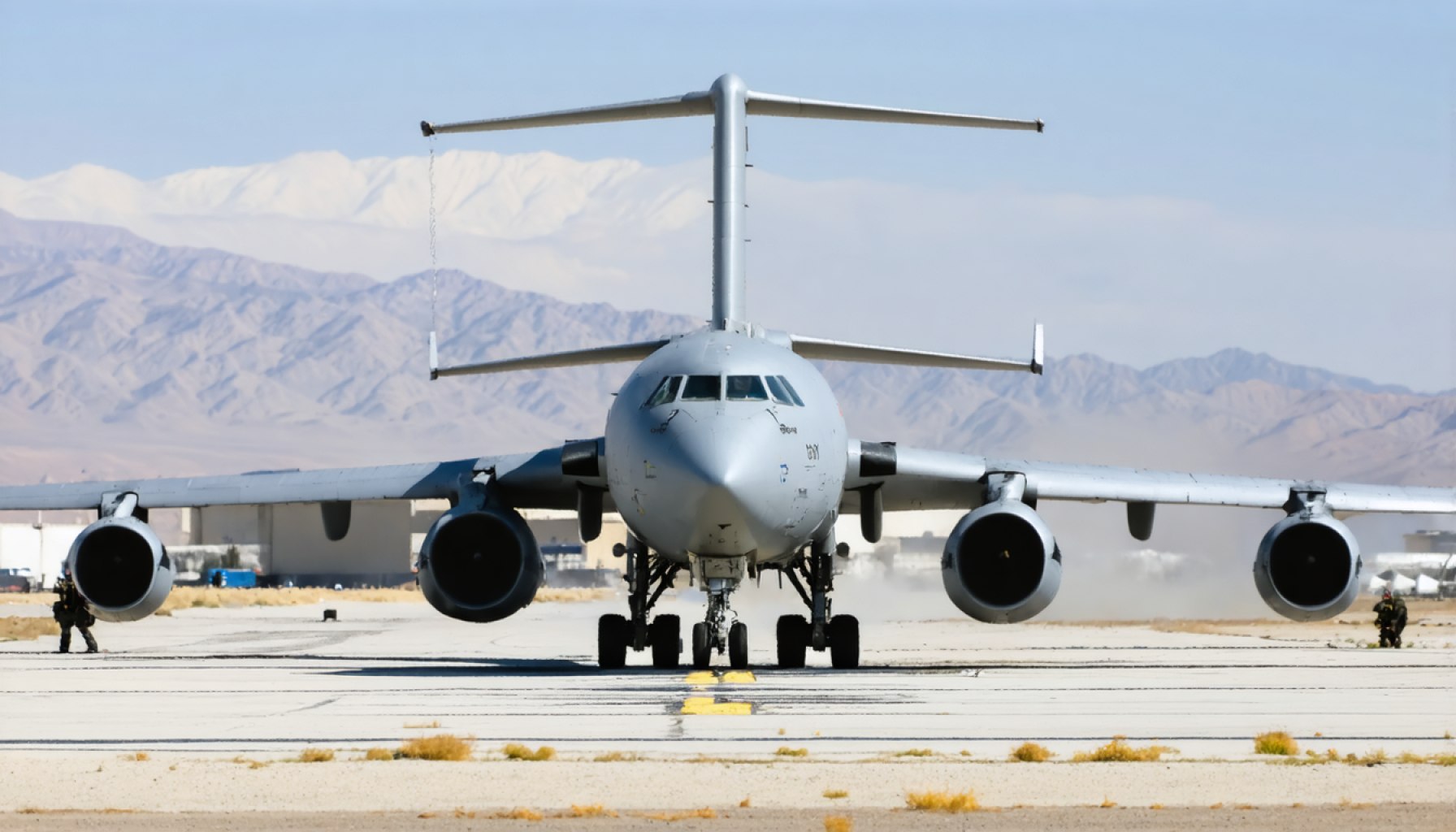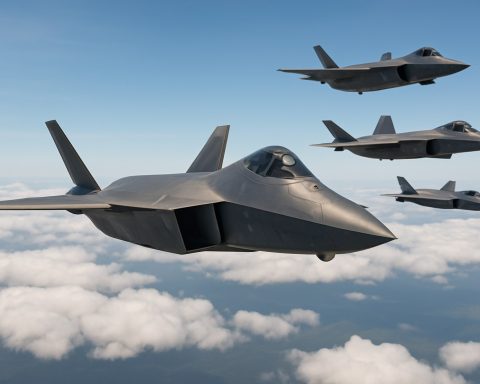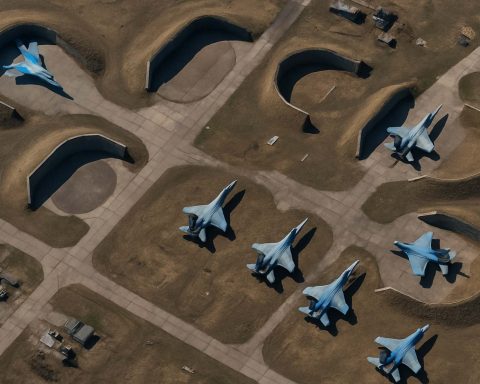- The US C-17 military plane’s landing at Bagram Airbase raises questions about renewed American interest in Afghanistan.
- Geopolitical dynamics are shifting, with China’s Belt and Road Initiative amplifying influence in Asia.
- Afghanistan, rich in untapped resources and strategically located, draws global power interests.
- Intelligence operations possibly continue under the radar, engaging with regional complexities involving the Taliban and neighboring countries.
- Strategies extend beyond military action, incorporating humanitarian aid, diplomacy, and sanctions.
- Bagram’s historical and strategic significance remains pivotal as a site for potential logistics, intelligence, and diplomatic operations.
- Ongoing events in Afghanistan reflect larger international power plays and future regional influences.
The rugged mountains of Afghanistan have long been a stage for unfolding dramas shaped by global powers. A dramatic scene recently entered the spotlight: a US C-17 military plane touched down at the Bagram Airbase, a stronghold spiraling in geopolitical significance. This event rippled through news channels, invoking speculation and intrigue: is the US stepping back into the Afghan arena?
As the desert winds swirl around the airship remains at Bagram, questions soar alongside. Not so long ago, in 2021, the world watched as the US wound down two decades of military presence in Afghanistan with the Taliban swiftly occupying the power vacuum. The turbulent departure marked a pivotal chapter, closing a costly episode in America’s foreign endeavors. Yet, with this recent landing, the specter of a renewed interest looms large.
Why now? Observers note the evolving mosaic of global power dynamics. China, with its Belt and Road Initiative, steadily extends its influence across Asia. Afghanistan, with its strategic position and untapped mineral wealth, remains an enticing prospect for expansionist ambitions. By keeping a foothold through whatever means, the US might aim to balance this regional power play.
Experts discuss the shadowy hands of intelligence – a continuous presence even after overt military operations cease. The CIA and other entities maintain a discreet pulse on Afghan affairs, especially considering the delicate alchemy of the region’s mix: a resurgent Taliban regime, emerging local power struggles, and the shifting allegiances of countries like Pakistan and Iran.
Power isn’t just about military presence. The whispers of clandestine operations echo louder than the roar of jets. Humanitarian aid, covert diplomacy, and strategic sanctions also weave into a complex strategy to mold the future landscape of Afghanistan. Amidst these, preserving the global nuclear order remains crucial; Afghanistan’s close proximity to nuclear-capable nations adds to the stakes.
Bagram itself hums with historical weight. Once a hub of US military might, its infrastructure and strategic location render it a watchtower in the Afghan terrain. The latest landing rekindles this spirit, whether as a logistical endeavor, an intelligence operation, or merely a routine diplomatic overture.
The takeaway? In the tapestry of international relations, rare are the threads left to fray. As nations play chess on the geopolitical board, places like Bagram remain pawns in play. Understanding these moves provides insights into how powers foresee and shape our shared future.
Such brief glimpses into strategy, we must remember, are mere fragments of a grander game. Eyes fixed on Bagram’s runway are watching, waiting for the next reveal.
US Returns to Afghanistan: Strategic Moves or Routine Operations?
Unpacking the C-17’s Landing at Bagram
The US C-17 military plane’s recent touchdown at Bagram Airbase has reignited discussions over America’s role in Afghanistan. While the military withdrawal in 2021 marked an end to direct military engagement, this latest development suggests potential shifts in strategy or highlights ongoing commitments within the region. Here’s a deeper dive into this unfolding narrative:
Historical and Strategic Significance of Bagram Airbase
Bagram Airbase has long been a strategic asset for the United States. It served as the central hub for combat and logistical operations during the US-led war in Afghanistan. With its extensive infrastructure, including multiple runways and facilities for housing large military populations, Bagram remains essential for rapid deployment and intelligence operations. It’s not merely an airstrip; it’s a strategic chess piece on the global stage.
Why is the US Interested in Afghanistan Again?
1. Counterbalancing Regional Powers: The US economy and security interests are intertwined with Asia’s stability, where China’s Belt and Road Initiative (BRI) seeks to increase its influence. By keeping a foothold in Afghanistan, the US may aim to counterbalance China’s ambitions and maintain its regional influence.
2. Mineral Wealth: Afghanistan is rich in untapped mineral resources, including lithium, which is crucial for modern technologies. Control or influence in the region could provide economic advantages and strategic resources.
3. Intelligence and Surveillance: Despite the military withdrawal, US intelligence agencies remained active. The presence at Bagram could facilitate covert operations and intelligence-gathering, crucial for monitoring Taliban activities and regional threats from neighboring countries.
How-to Steps & Life Hacks
– Monitor Global Power Dynamics: To keep informed about international shifts, use reliable sources like global news networks and governmental updates.
– Engage in Informed Discussions: Join forums and social media platforms that focus on geopolitics to exchange views and stay updated on geopolitical developments.
Real-World Impact and Use Cases
1. Strategic Military Usage: In future conflicts or peace operations, Bagram could serve as a critical base for logistical support or troop deployments.
2. Humanitarian Efforts: The airbase can be positioned as a key location for humanitarian aid distribution, supporting initiatives to stabilize the region.
Market Forecasts & Industry Trends
– Security and Defense: The defense industry may see increased investments in intelligence tools and aerospace technologies due to rising geopolitical tensions.
– Minerals Market: If stability in Afghanistan is secured, the global market for rare minerals may experience a shift, impacting prices and supply chains.
Reviews & Comparisons
– US Military Strategy vs. Chinese Diplomacy: The US tends to favor military and covert operations, whereas China leans on economic influence through investments and infrastructure projects.
Pros & Cons Overview
– Pros:
– Helps maintain US strategic presence
– Supports peace and stability efforts
– Provides logistics for humanitarian aid
– Cons:
– May spark regional tensions
– Risks further entanglement in Afghanistan
– Could be viewed as an intrusive presence by locals
Conclusion: Immediate Recommendations
1. Stay Informed: Regularly check reputable news sources to stay updated on developments in Afghanistan and understand their global impacts.
2. Engage Diplomatically: Encourage dialogue with diverse perspectives to gain a balanced understanding of the situation.
3. Support Humanitarian Initiatives: Donations or support to reputable organizations working in Afghanistan can help provide much-needed aid to the local population.
For more on geopolitical developments and international relations, visit the main page of Council on Foreign Relations.







